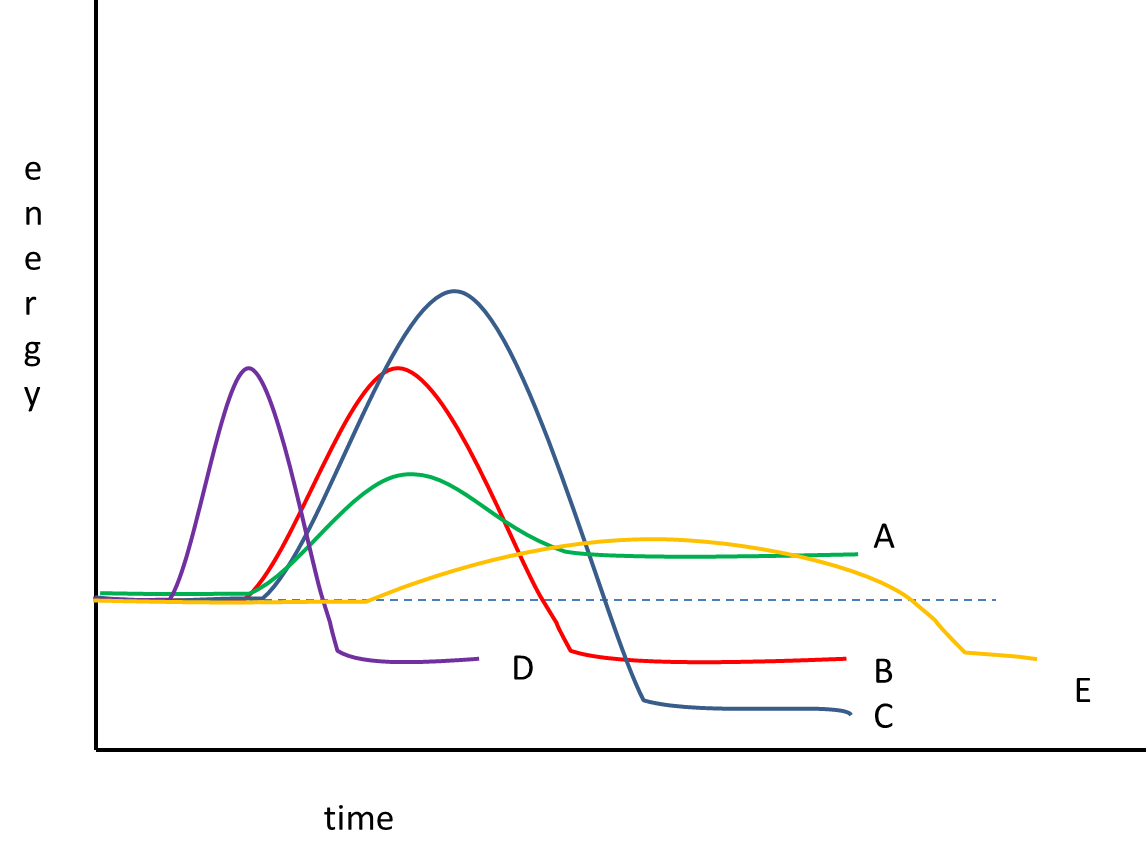Video Review
Key Concept Summary
TA Summary
Vocabulary
The point in a chemical reaction in which the forward and reverse reaction rates are equal.
The low energy orbital of the pair of molecular orbitals (MO's) formed when two atomic orbitals combine.
The high energy orbital of the pair of MO's formed when two atomic orbitals combine.
A temporary product of a chemical reaction that typically has more chemical potential energy than either the reactants or the final products.
The energy that must be put into a system before a reaction can take place.
True/False
The probability waves (orbitals) that describe the possible locations for an electron in a molecule are exactly the same as those for an electron in an isolated atom.
Electrons in a bonding molecular orbital are most likely to be found between the nuclei in a molecule.
A reaction usually goes faster at higher temperatures.
A catalyst is a chemical that is present at the beginning of a reaction but not at the end.
A very fast reaction has a very high activation energy.
Molecular orbitals are the same shape as atomic orbitals.
An energetically favorable reaction gives off heat.
Energy and entropy are both involved in chemical reactions.
Analysis
Which of the following equations is NOT balanced?
Atomic chlorine (Cl) is known to be a catalyst for some of the reactions that are responsible for the depletion of ozone (O3) in the upper atmosphere (also known as the ozone hole). As a catalyst, Cl may
In a bonding orbital between two atoms, where is the electron density the highest? (Where do you have the highest probability of detecting an electron?)
How does a catalyst affect a reaction?
The graphs below show energy as a function of time for several different reactions. What does the height of the peaks represent? 

Which of the equations below is balanced correctly?
Which of the following is the best description of activation energy?
In the chemical equation C6H12O6 + 3O2= 3CO2 + 6H2O, how many oxygen atoms are on the right side of the equation?
In the equation C2H4 + 3O2 = ? CO2 + 2H2O, how many CO2 molecules are needed to balance the equation?
In which of the following processes is the end product more ordered than the reactants? (In which process does entropy decreases.)
In order for a chemical reaction to occur:
The graphs below show energy as a function of time for several different reactions. Which of the reactions shown below would end up absorbing energy from the surroundings? 

The graphs below show energy as a function of time for several different reactions. Which of the reactions shown below would require the most energy to get started?

The graphs below show energy as a function of time for several different reactions. Which of the reactions shown below would release the most energy to the surroundings?
